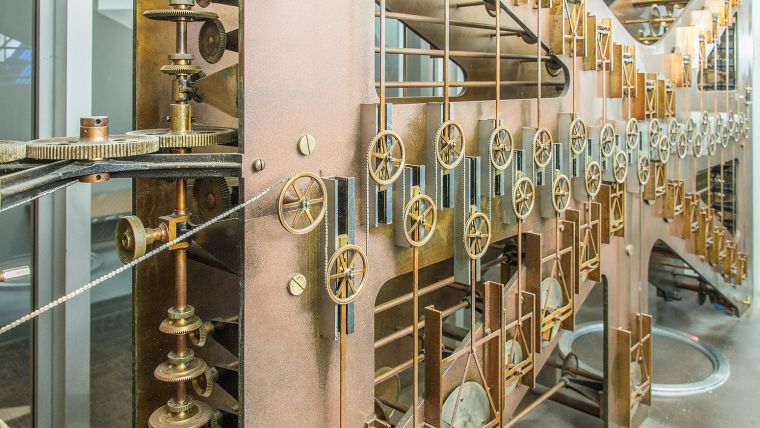Were Tide Prediction Machines the First Analogue Computers?
In a research paper recently published in History of Geo- and Space Sciences, National Oceanography Centre (NOC) scientist Professor Philip Woodworth describes the history and basic principles of tidal prediction machines. Invented in around 1873, tidal prediction machines were analogue computers that provided an accurate and efficient means of predicting the ocean tide. Professor Woodworth: "Although only around 10% of the tidal prediction machines ever created were in operation at the Liverpool Tidal Institute, this paper demonstrates the central role of this institution, Arthur Doodson, and the UK more generally in this area of tidal science."
Captain Scott's Discovery
The present-day NOC dates back to precursor institutions, each with long histories. As a national institution, it was formed in 1949 as the National Institute of Oceanography (NOI), based in Wormley in Surrey (UK) from the 1950s. The NOI grew from the work of scientists working at Antarctic whaling stations and the complimentary voyages of Captain Scott's Discovery and a small group of young scientists brought together during the war to study how the movements of the waves affected amphibious landings.
Liverpool Tidal Institute
Meanwhile, NOC’s operations in Liverpool (UK) stem from the Liverpool Observatory, founded in 1843 to measure the longitude of Liverpool and to measure tides. After a short period based in Liverpool itself, it moved to Bidston on the Wirral peninsula and in 1919 became the Liverpool Tidal Institute. This work led to the development of the methods of tidal prediction used worldwide today. The institute broadened its research over the years to include the prediction of storm surges and sea level science more generally, as well as coastal and continental shelf sea oceanography and marine data management.
Seas, Ships and Scientists
On 1 November 2019, NOC became an independent, self-governing organization with research spanning the coast to the deep ocean and supporting major national research infrastructures such as research ships, nationally pooled marine equipment and the management of nationally important marine data and sample assets.
For the full history of our origins, read: Of Seas and Ships and Scientists: The Remarkable History of the UK's National Institute of Oceanography, 1949–1973. Click here to read the whole research paper, published in the journal History of Geo- and Space Sciences.
Caption: This photo shows the largest of the three sections of Tide-Predicting Machine No. 2. The gears on the left transmit power from the hand crank. The components on the right contribute to the computation of the time of high and low tides (courtesy wikipedia.org).














